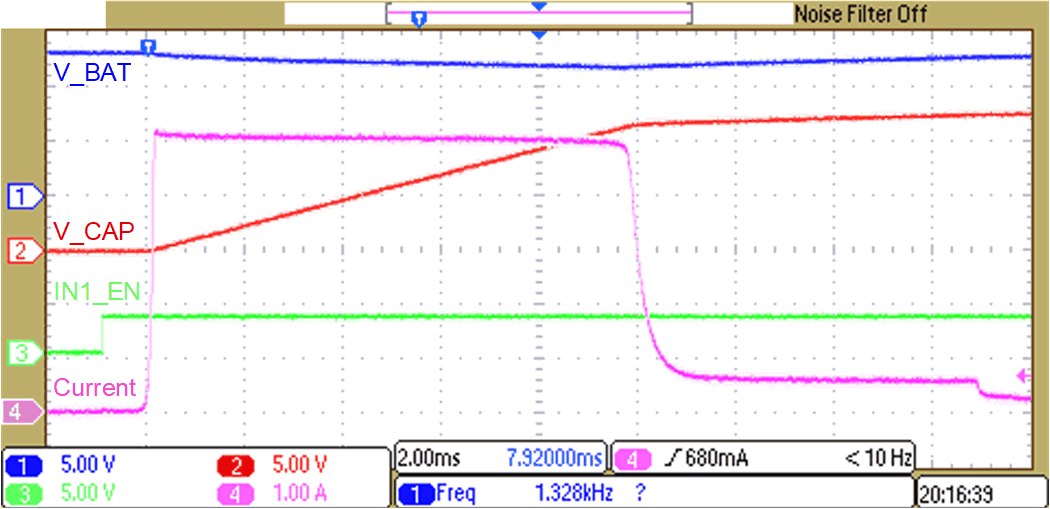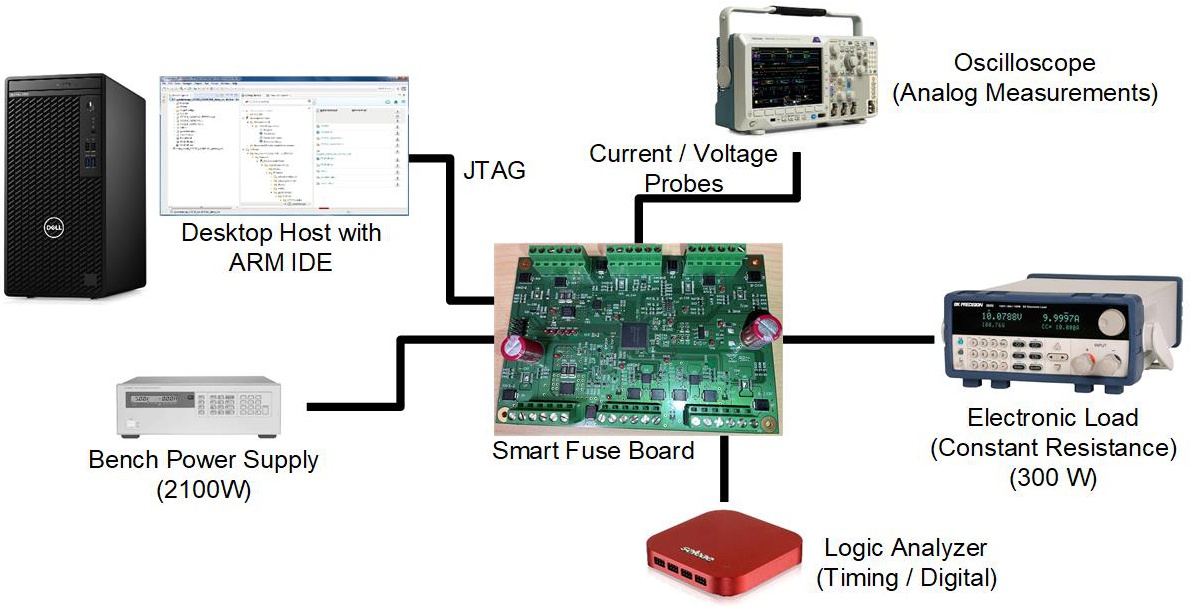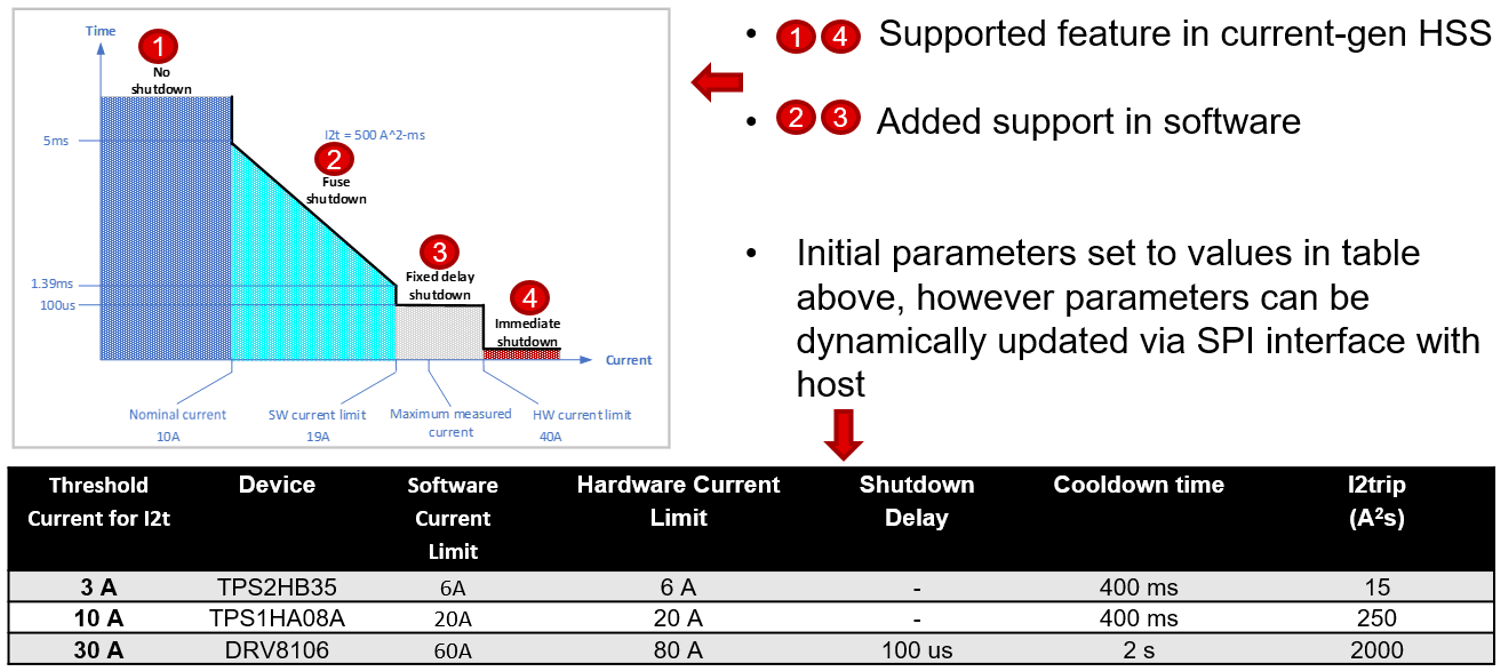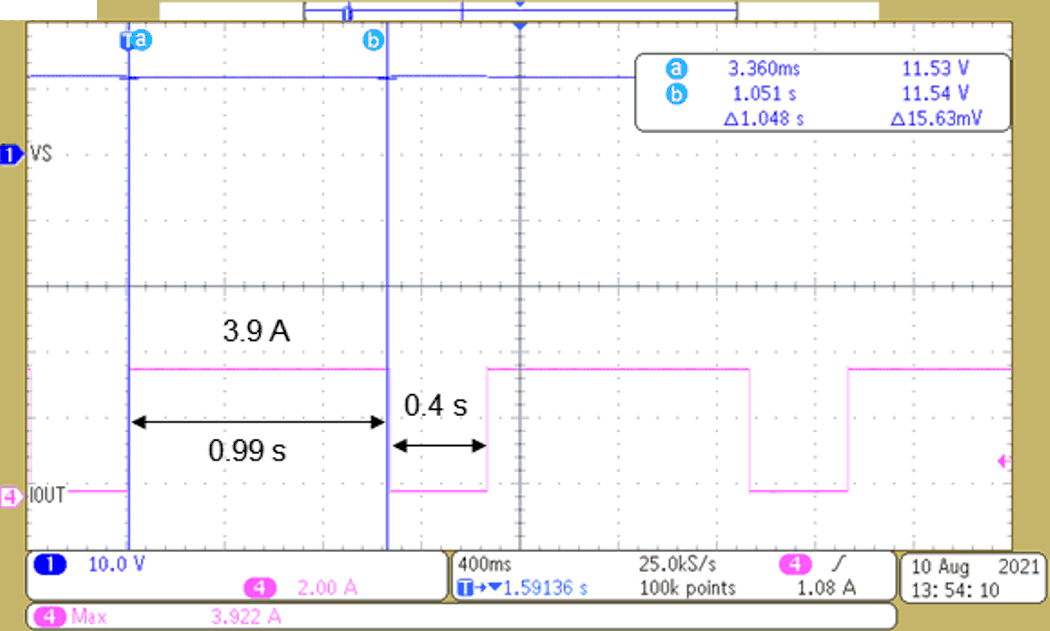SLVA876A February 2023 – April 2023
1 Application Brief
Introduction
In the next few years, the interest in replacing a melting fuse in automotive applications with a smart fuse is likely to continue increasing. Melting fuses have been in use in automobiles for decades to prevent thermal damage to cables. These fuses have always had high reliability and low cost. With the increasing number of electronic control units (ECUs) and the maturity of high-power MOSFET technology, MOSFETs can be used to replace the traditional melting fuses. A smart fuse is defined in this application brief as MOSFET which is a based protection mechanism that has the potential to be unmatched by a melting fuse. A smart fuse can enable easy measurement of current and management of load. A smart fuse is especially easy to maintain in case a fault occurs. The smart fuse does not need replacement and can be reset using software.
This article discusses Texas Instruments’ (TI) investigation of smart fuse designs for different current levels. Figure 1 shows the block diagram of the implemented smart fuse design. For load currents smaller than 10 A, TI’s high-side switch, such as TPSXHBXX-Q1 and TPSHXXX-Q1 are used in the implementation. For load current higher than 10 A. The TPS1211x-Q1, TPS4811x-Q1, and DRV8106-Q1 devices with the addition of an external MOSFET are used to implement smart fuse designs. Of course, all of those devices integrate the current sense. So it is easy to implement current limit base wire protection or to use analog to digital converters (ADCs) in microcontrollers (MCUs) to measure load current and implement sophisticated I2T wire protection schemes.

Figure 1 Texas Instruments Smart Fuse Design
Current Limit Method for Smart Fuse
In most cases, the smart fuse design does not require the complex I2T function; rather, the current limit function is sufficient for wire protection.
Resistance load: The current of the resistance load always obey Ohm’s law. So it is easy set the safe current limit.
Inductance load:For automotive body inductive loads, such as the relay, solenoid or valve, the DC resistance is several Ω in value. Applying Kirchhoff’s voltage law in the series RL circuit, , it can be inferred that the steady state load current is mainly determined by the DC resistance. With a 12-V battery, the current is a few amperes, if not hundreds of milliamperes. So the safe current limit can be easily determined.
Capacitance load: These loads such as such as electronic control units (ECUs) or input capacitor banks have inrush current resulting in a high risk to electronic devices and wires. In such cases, use the power MOSFET to limit the inrush current. Figure 2 shows DRV8106-Q1 high-current smart fuse design and Figure 3 shows the resulting inrush current when the MOSFET is operated in the saturation region for a limited amount of time at power up. This figure shows that the inrush current is limited to about 5 A. Of course, the normal current is typically lower than a chosen limit current after power up.

Figure 2 Current Limit – DRV8106-Q1

Figure 3 DRV8106-Q1 Current-Limit Testing
The current limit-based wire protection is typically lower in cost and less complex, which can be effectively used to limit the current during inrush, overcurrent, and short circuit. TI’s high-side switch shown in Figure 1 has an adjustable current limit capability; current limit can be configured easily using a resistor on the ILIM pin.
I2T Protection Considering for Smart Fuse
If the load current behavior cannot be determined, such as the electronic control unit (ECU) is very complex and driving many different types of loads, or if the load is a bulb, then the I2T wire protection scheme can be more effective than the current limit based protection. Figure 4 shows an I2T-based implementation of the block diagram in Figure 1. In this case, the I2T protection algorithms are implemented in the MCU.

Figure 4 Smart Fuse Board Testing Setup
Figure 4 shows the time-current characteristics of the smart fuse design. In this figure, segment 1 of the curve is the nominal work current, such as the current under 10 A. In segment 1, the switch works without shutdown. Segment 2 of the curve shows the integral of I2 over time. In this segment, the high switch is turned when the interval value reaches a predefined threshold. Segment 3 of the curve is optional and is implemented for current measurement range-resolution tradeoff. And finally, segment 4 of the curve is the region when the high-side switch is immediately turned off. This overcurrent feature is easily implemented in TI high-side switch and controller designs.

Figure 5 I2T Protection Algorithm
Figure 5 shows the test result of 3-A smart fuse with I2T threshold of 15 A2s. Specifically, the scope trace shows that when 3.9 A flows continuously for 0.99 s, the channel shuts down. This is because 3.9 A × 3.9 A × 0.99 s reaches the threshold of 15 A2s.

Figure 6 Smart Fuse Test Result
Conclusion
Smart fuse designs are already replacing melting fuses. TI’s portfolio of a broad range of high-side switches and gate controllers can be used to implement either the simpler current-limit wire protection schemes or the more sophisticated I2T protection schemes.